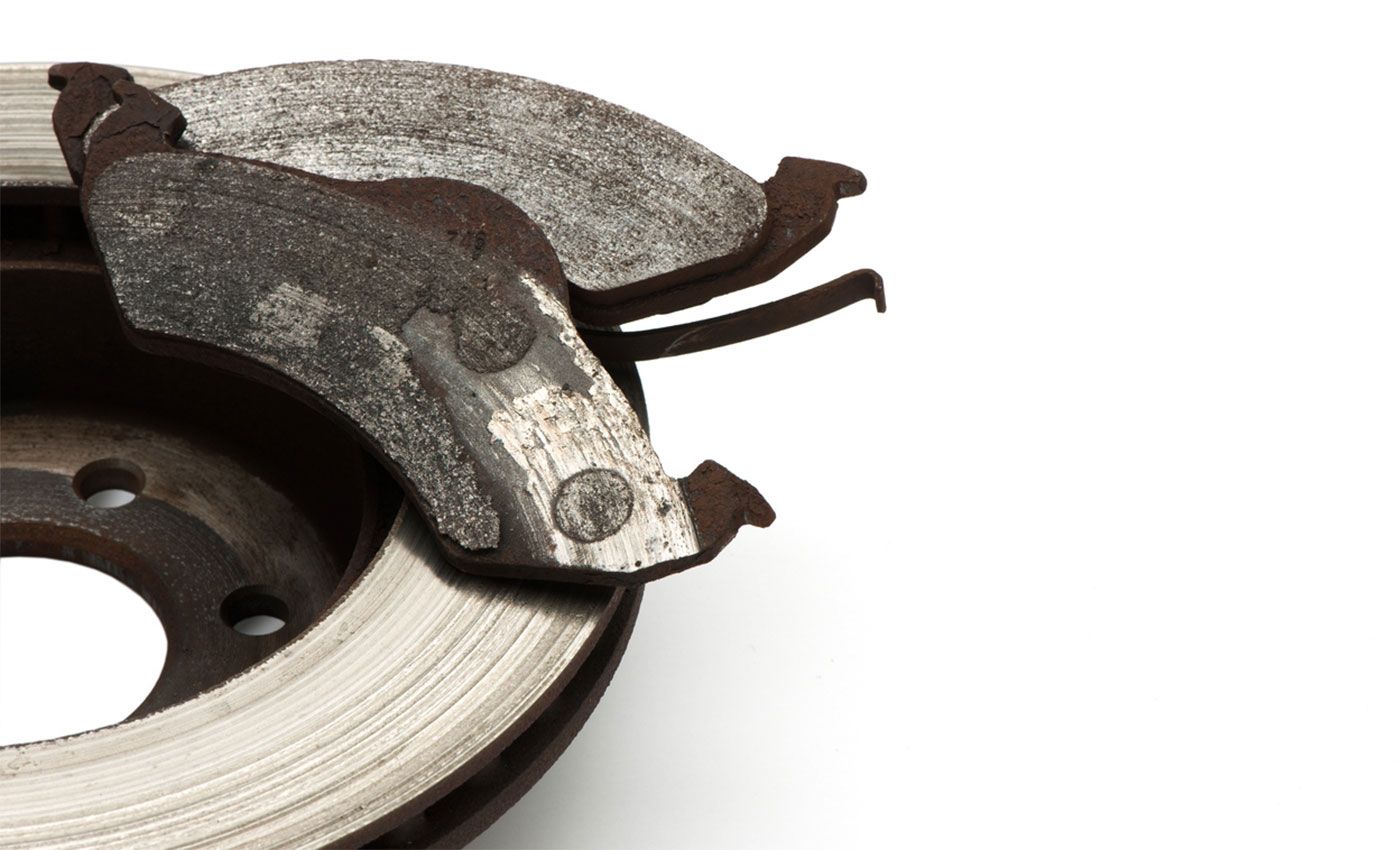When you hear squealing when braking or your vehicle doesn’t stop as well as it used to, it’s probably time to change your brake pads. But when you do, you may wonder — should you replace all 4 brake pads at once when purchasing a new set?
Read on to become a brake pad expert! We’ll explain how brake pads work, where they’re located, and answer a few frequently asked questions about this critical component.
What are Brake Pads and How Do They Work?
Before we discuss whether to replace all brake pads simultaneously, it’s essential to understand that brake pads are one of the most essential parts of your braking system. On most cars, there are two brake pads — an inner and outer pad per wheel. That totals to eight pads.
The brake caliper uses hydraulic pressure to squeeze these pads against the brake rotor — the component each of your vehicle’s rims and tires are bolted to — every time you depress the brake pedal. Once they contact the rotor, these pads use friction to slow down your vehicle.
Do Brake Pads Wear Evenly?
As your car slows down, its weight balance shifts forward, making the front heavier than the rear. To compensate for this weight transfer, traditional braking systems place more pressure on the front brakes than the rear ones. As such, your brake pads may not wear evenly. In fact, front brake pads generally wear significantly faster than rear brake pads.
Even between sets of pads, one side can wear faster than the other, though this is considered abnormal. If your brake pads are wearing unevenly between the driver and passenger sides of the vehicle, you may have a problem with your brake calipers, rotors, or pads.
We don’t recommend simply replacing the worn-out pads in this scenario. Doing so can bandaid a potentially dangerous problem. Instead, find the root of the issue by bringing your vehicle to Firestone Complete Auto Care for a free brake inspection.
Indicators of Worn Brake Pads
Knowing when to replace your brake pads is vital to maintaining your vehicle’s safety and performance. Common signs of worn-out brake pads include:
- Squealing or grinding noises when braking
- A soft brake pedal
- A pedal that pulsates during braking
- Longer stopping distances
- Grooves in your brake rotors’ surfaces
- A steering wheel that pulls to one side during braking
If you notice any of these signs, it’s probably time to replace your brake pads.
So, Should You Replace All of Your Brake Pads at Once?
If you’re experiencing any of the symptoms above, you know your brake pads may need to be replaced — but should you replace all of them at once? At a minimum, you should replace one axle set (four pads, left and right side of an axle) at a time. That is, you should replace both the front driver and passenger sets of brake pads at the same time, and the same goes for the rear.
However, if you want the best possible performance, consider replacing all eight brake pads simultaneously. Plus, if you’re not replacing your brake pads at home, you can save yourself an extra trip to the shop by having both the front and the rear brake pads replaced at the same time.
Brake Pads: FAQ
Do Cars Have Brakes on All 4 Wheels?
Yes, all modern cars have brakes on all four wheels. This helps maintain braking balance, distribute heat between pads, and bring your vehicle to an efficient stop.
Are Front and Rear Brake Pads the Same?
More pressure is generally exerted on the front pads than on the rear. To compensate for this, most vehicles utilize different brake pads for the front and rear of the car. Front brake pads tend to be larger and made of more aggressive compounds for increased friction. Rear brake pads tend to be smaller, which decreases friction and keeps the vehicle stable during heavy braking.
What Happens If You Don’t Replace Your Brake Pads?
If you don’t replace your brake pads, two things may inevitably happen:
- Your brake pads may become so thin that they can’t dissipate heat or grip the rotor efficiently enough to stop safely.
- Your rotor may warp from heat or sustain damage from the metal brake pad backing coming into contact with its surface.
Either of these will ultimately reduce your vehicle's stopping power, handling, and safety. If any of your rotors are damaged, have them replaced. Rotor replacement is much more costly than brake pad replacement — so a little money upfront can save a lot in the long run.
Should You Replace Your Rotors When You Replace Your Brake Pads?
Not always. Brake pads generally wear faster than brake rotors. As such, rotors mostly need to be replaced when they have warped, worn too thin, or sustained substantial grooving.
If your rotors are in good shape, replace your brake pads and keep on trucking. But if you notice that your vehicle vibrates, shakes, or pulls to one side during braking, it may be time to have your rotors examined or replaced. However, you should replace your brake pads when you replace your rotors. Otherwise, you risk wearing your brand-new rotors unevenly.
Is Your Vehicle at its Braking Point?
For brake inspection or repair and quality replacement parts, schedule an appointment or visit your local Firestone Complete Auto Care today. You can take advantage of our free brake inspections to ensure your vehicle's safety on the road. And if needed, we'll replace all of your brake pads for you. Don't wait until it's too late — address any brake concerns promptly for peace of mind behind the wheel.


